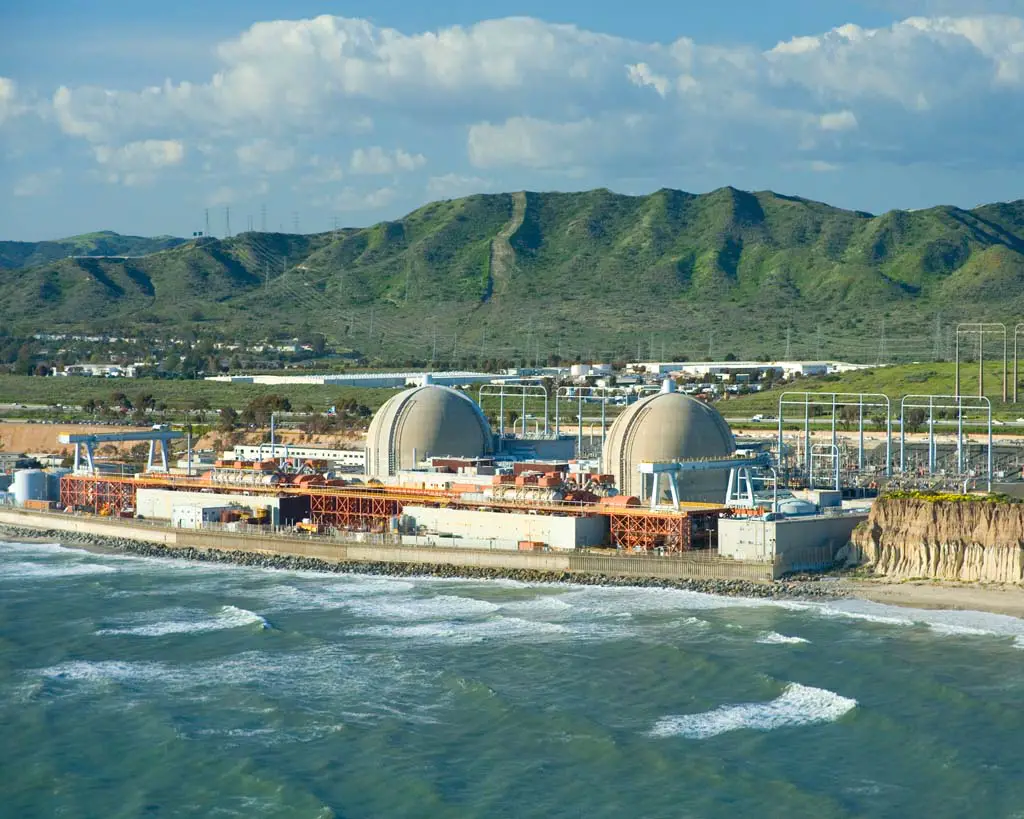REGION — There are currently hundreds of thousands of nuclear fuel rods containing radioactive waste being stored at the inoperable San Onofre Nuclear Generating Station (SONGS).
And all of that nuclear waste is not going anywhere any time soon.
SONGS was shut down in January 2012 due to leakage of radioactive fluid in its steam generators and officially retired from operation earlier this year. But after years of power production, the nuclear power plant accumulated large quantities of radioactive spent nuclear fuel.
The spent fuel, which is uranium fuel that has been used in a nuclear power reactor until it is no longer capable of generating power, is high-level radioactive waste. Direct exposure to this highly hazardous material even 10 years after it has been removed from a reactor can be extremely deadly, according to the U.S. Nuclear Regulatory Commission (NRC).
The plant’s spent nuclear fuel will remain on site indefinitely because the federal government has not established any other place to securely store SONGS’s radioactive material or that of any other nuclear power plant around the country.
The U.S. Department of Energy became responsible for building and operating a repository deep underground for the permanent storage of spent nuclear waste from the nation’s power plants when Congress passed the Nuclear Waste Policy Act in 1982.
Nevada’s Yucca Mountain was established as the location for the nation’s first repository, but in 2010 President Barack Obama pulled all funding for the project before construction at the site was completed.
“All of the nuclear plants in the country are storing all of the fuel on site until the time comes when the government builds a permanent geological repository,” explained NRC spokesperson Victor Dricks.
Without plans for another site or resuming construction at Yucca Mountain, the spent nuclear fuel from nuclear power plants must remain on site for an unforeseeable number of decades.
This leaves 3,963 spent fuel assemblies, which contain 200 or more nuclear fuel rods, on site at SONGS, according to Dricks. Most of these spent fuel assemblies are kept in cooling pools.
Because of a court order in 2012, the NRC is in the process of updating its formal documentation of the safety and environmental impacts of storing nuclear waste at operating and non-operating nuclear reactors.
So far the NRC has developed a draft of a new “Waste Confidence Generic Environmental Impact Statement”, and is collecting public comments on the document before revising the draft and submitting it for final approval.
The report analyzed the effects on of storing the high-level radioactive material at the reactor sites for a 60-year period, a 160-year period, and indefinitely on the surrounding land, climate and air quality, water resources, public health and other areas.
On site, the spent fuel is stored in water in large cooling pools with steel-reinforced concrete walls after being removed from the reactor for a minimum of five years. If the pools are full and the fuel has been sufficiently cooled, spent fuel can be transferred into dry storage casks.
The draft incorporated the NRC’s efforts to study how the spent fuel pools at U.S. reactors could stand up against earthquakes and tsunamis the magnitude of those experienced at Japan’s Fukishima plant.
The NRC report did not address storage at a specific nuclear reactor site, but analyzed the impacts of spent fuel storage at what it deemed a generic nuclear reactor site.
The draft report found nearly all of the safety and environmental consequences of storing spent nuclear fuel on reactor sites to be small. But the document did acknowledge that the impacts of on-site storage could accumulate over the years to moderate and large levels.
The report also noted that storing the fuel on site could have drastic effects on the surrounding area if a terrorist attack, prolonged leak of the spent fuel, or fire in the spent fuel pool occurred, but concluded the chances of such events actually happening were minimal.
The NRC held a public comment meeting on the report in Carlsbad on Nov. 18.
Of the approximately 100 people that attended, most spoke in opposition to the report, citing specific concerns about the fuel stored at SONGS.
“The NRC has allowed the nuclear plants run with much more dangerous fuel without even a solution for storing them,” said Donna Gilmore, who manages the website, sanonofresafety.org.
A woman from Escondido voiced her fears of radiation leakage from SONGS, saying, “As a resident of Escondido, I’m among 8.4 million highly vulnerable citizens who are located within 50 miles of the San Onofre reactors.”
Though NRC representatives did not respond to the comments at the meeting, Dricks explained that the report establishes that it is possible to safely store the spent nuclear fuel at reactor sites.
He said that the used nuclear fuel could be safely stored for 300 years on site if the fuel rods were transferred into dry casks and those dry casks were replaced every 100 years.
The NRC will continue to collect public comments on the draft report until Dec. 20. For more information visit regulations.gov.


